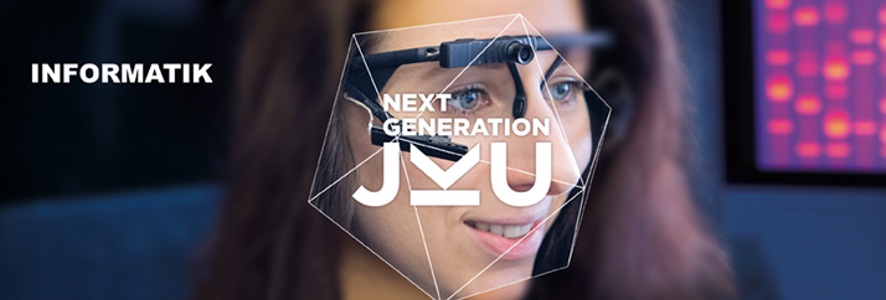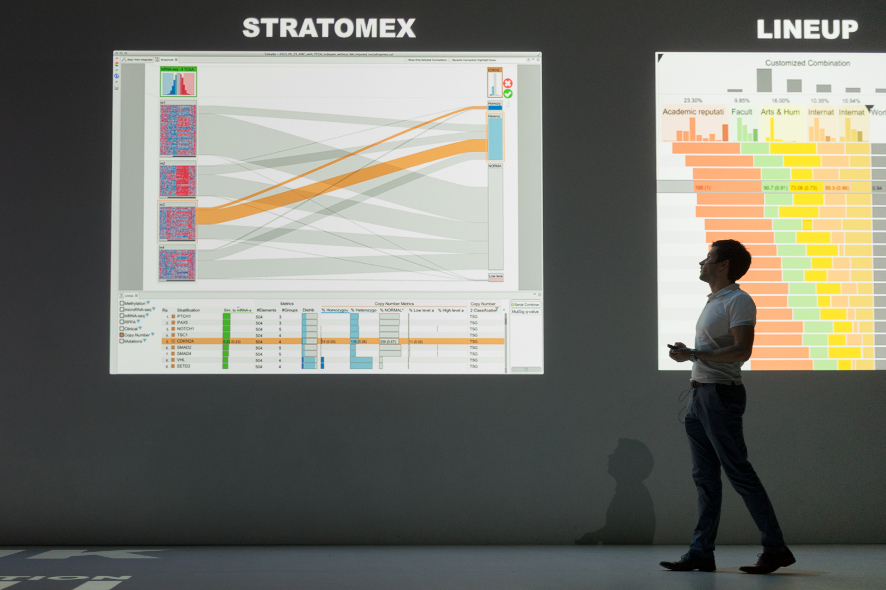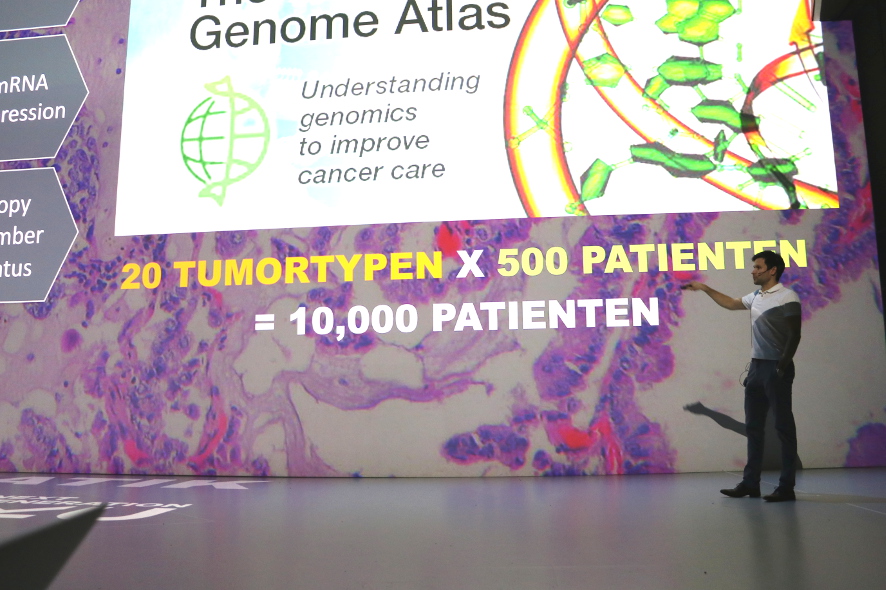On Thursday, February 23, 2017 at 7 PM, Prof. Marc Streit, Associate University Professor in the Institute of Computer Graphics at Johannes Kepler University (JKU), kicks off the “Deep Space LIVE: Next Generation JKU” series designed to provide outstanding young faculty members in the school’s technical and scientific departments an opportunity to present their research with the help of the extraordinary technology available in the Ars Electronica Center’s Deep Space. The speakers are brilliant young Upper Austrian scientists who are virtually unknown in this country but have already made names for themselves worldwide and are quoted in the most important professional journals in their fields. Now is the time “for them to take center stage and introduce themselves to the general public,” said Dean Alois Ferscha of JKU’s Faculty of Engineering and Natural Sciences.
In his address, Prof. Streit will present innovative visualizations that support scientists’ efforts to discover patterns and interrelationships in their data. He’ll cite several examples to illustrate how interactive visualizations of huge quantities of data are now used—for instance, in cancer research.
“Only if we come to understand which constellations lead to cancer can we then bring about a long-term improvement in detection and treatment,” stated Marc Streit.
Big Data is a term that’s been making the rounds in business circles for several years now, and many large companies have long since begun collecting huge quantities of data. Nevertheless, when it comes to analysis and actually exploiting this potential, there are still a lot of hitches in most cases. As a researcher and instructor in the Institute of Computer Graphics at JKU, Prof. Streit focuses on the visualization of biological data. His work has already been singled out for recognition with numerous Best Paper awards. His research group is concentrating on the visual analysis of large quantities of data, and is working together with a team at US-based Harvard University in the field of cancer research.
We talked to him about how he succeeds in identifying patterns, trends and anomalies in huge quantities of data and thereby revealing the emergence of diseases such as cancer.

Big Data—and, thus, the analysis of data in the medical field too—has been the subject of an increasingly heated discussion. What data are being analyzed and where are they gathered?

Marc Streit: There’s a wide variety of data sources that are interlinked. On one hand, data can result from measurements at the genome level—for example, whether a gene is copied too often or not often enough, or if the copy contains errors. On the other hand, clinical data such as age, tumor size, course of treatment and accompanying illnesses are registered. Then the data related to a particular patient are also considered in the context of metabolic cycles that describe the sequences in our cells. The challenge is to interlink the various elements of this broad, heterogeneous spectrum of data to ultimately glean new insights from them.
Much media coverage lately has led to Big Data being seen as a threat by people concerned about their privacy. Why does this sector have such a bad reputation?
Marc Streit: In this sense, Big Data resembles lots of other hot topics—at some point, they go out of fashion due to overuse. Now, the modern term is Data Science, which is frequently found in descriptions of job openings and educational offerings.
Data privacy is a touchy issue. Patients’ medical data is subject to very strict protection—and that’s a good thing. In my opinion, however, individuals ought to have the right to determine for themselves whether to permit their data—anonymized, of course—to be made available to scientists and researchers. The larger the database is that researchers have to work with, the more insightful and reliable are the results they can achieve.

Credit: Robert Bauernhansl
You’ve developed innovative visualizations that facilitate the identification of patterns and interrelationships among huge quantities of data. How does your software differ from conventional approaches?
Marc Streit: Conventional approaches are often strongly oriented on automatic analysis of data. Our work dovetails statistics and machine learning approaches with interactive visualizations, whereby the user can freely explore the data and bring background knowledge to bear in the analysis. It also takes advantage the quintessentially human capacity to recognize patterns and to draw logical conclusions from them. Then again, to prevent users from losing their bearings while exploring the data, our software makes targeted suggestions as to where potentially interesting patterns might be concealed.

Credit: Magdalena Sick-Leitner
When we “see the data” and thereby actually do “understand cancer” someday, to what extent will that help to cure cancer?
Marc Streit: Cancer is a very complex disease. It’s not a single genetic change that leads to the growth of a tumor; rather, this is attributable to a complex combination of several mutations and additional factors. Making patterns visible helps researchers discover these interrelationships among heterogeneous data. Only if we come to understand which constellations lead to cancer can we then bring about a long-term improvement in detection and treatment.

Credit: Magdalena Sick-Leitner
Participation in the Next Generation JKU series is giving you the opportunity to use the technology in Deep Space. What advantages does this entail in the presentation of your research results?
Marc Streit: The quality of a visualization of a large quantity of data depends on utilizing the largest possible number of pixels. Deep Space’s ultra-high-resolution projections make beholding the visualizations an extraordinary experience for spectators.

Next Generation JKU is a five-part presentation series meant to acquaint the general public with the latest socially-relevant research results achieved by young scientists on the faculty of Linz’s Johannes Kepler University.
Upcoming events:
| Thursday, March 30, 2017, 7-8 PM | Ian Teasdale & Wolfgang Schöfberger, chemistry and plastics engineering |
| Thursday, April 20, 2017, 7-8 PM | Robert Zillich, physics |
| Thursday, May 11, 2017, 7-8 PM | Simon Schneiderbauer, mechatronics |
| Thursday, June 1, 2017, 7-8 PM | Christoph Koutschan, mathematics |
